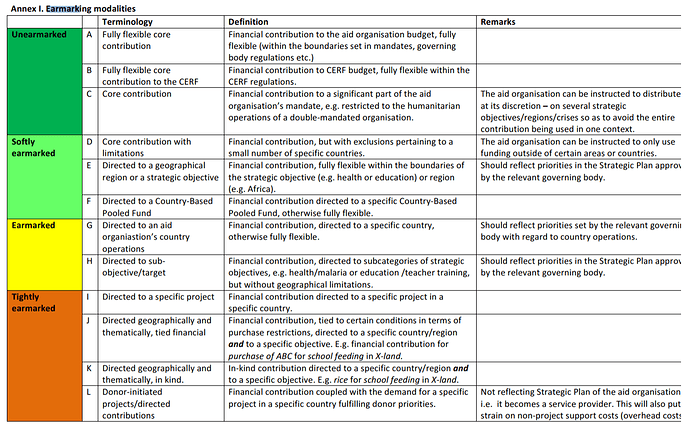I believe we have a misunderstanding here. The discussion is not if we should add the possibility to add earmark modalities to IATI or not. The discussion is about how we should do that.
The Grand Bargain requirement is that donors and aid organizations are transparent about their level of earmarking, so that the goal to reduce earmarking of contributions can be monitored.
To meet this requirement it could be sufficient to just add an earmarking element to the activity standard, with 4 possible values defined in a codelist(‘Unearmarked’, ‘Softly earmarked’, ‘Earmarked’, ‘Tightly earmarked’).
I would be very reluctant to add the whole aid typology from annex 1 to the standard for the following reasons:
- it will increase the chance of inconsistencies when you have two aid typologies. So it will be decrease data quality and it will make aid-typology data harder to use;
- it would mean moving away from the common standard we have right now;
- it will mean adding a new, detailed aid-typology to donor’s and aid organizations project management systems. This will take time, if it will happen at all. So it will increase the effort and therefore the barrier to adopt the Grand Bargain requirements.
Can anybody who has been involved in the discussion about the content of Annex 1, shed some light on this (@OJ_?). The text on page 12:
Progressively reduce the earmarking of their humanitarian contributions. The aim is to aspire to achieve a global target of 30 per cent of humanitarian contributions that is non-earmarked or softly earmarked by 2020
suggests that what is enough to make the distinction between earmarked and non-earmarked or softly earmarked.

